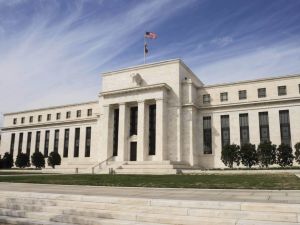In our second edition of Market Pulse, we take a closer look at the US housing sector, a key indicator of the nation’s economic health. Plus, a look ahead at the events to have in focus for the week ahead and all the market-moving news from last week.
The US real estate dilemma
This week, analysts and investors will closely monitor the US real estate market, with the update of the Standard & Poor’s/Case-Shiller composite home price index scheduled for Tuesday. Despite mortgage rates being near their highest levels in two decades and housing being far from affordable, home prices in the United States continue to rise. This is partly because few properties are available on the market, allowing buyers to drive up offers. The “rate lock” effect also plays a crucial role: homeowners who secured low rates in previous years are now reluctant to sell given the current high-rate environment. They are likely waiting for a potential rate cut before making their next move, although the Federal Reserve has indicated that this will not happen at least until September.
The Standard & Poor’s/Case-Shiller composite home price index is one of the most widely used measures of US residential property prices. The index uses the “repeat sales” method, which considers the change in home values, considering the properties’ quality and size. This means that the results consistently compare sales of similar homes over different periods. However, it is not without its flaws: the index does not account for new constructions and, since the data takes two months to arrive, it does not reflect the most recent market trends. To get a complete picture, it is important to keep an eye on complementary indices, such as those from the Federal Housing Finance Agency and the National Association of Realtors, which fill some of these gaps. Currently, these indices show that the median sales prices of existing homes are near historic highs and can only go higher.
The inventory of homes for sale, on the other hand, seems to be steadily increasing. The number of homes on the market rose by 9% last month, reaching 1.21 million units, the highest since October 2021. It is still below pre-pandemic levels, but the more listings increase, the more likely it is that the price surge will slow down. That said, a more sustainable growth in supply would probably require significantly lower mortgage rates, enough to encourage people to sell and expand the supply of properties on the market.
In the Calendar
Tuesday: Case-Shiller Home Price Index in the United States (March), Consumer Confidence in the United States (May).
Wednesday: Consumer Confidence in Germany (June), Business Confidence in Italy (May). Earnings: HP, Salesforce, UiPath.
Thursday: Economic Growth in Switzerland (Q1), Unemployment Rate in Italy (April), Producer Price Inflation in Italy (April). Earnings: Costco, MongoDB, Zscaler.
Friday: US PCE Inflation (April), Eurozone Flash Inflation (May), Economic Growth in Canada (Q1), Economic Growth in India (Q1), Economic Growth in Italy (Q1), Inflation in Italy (May), New Car Registrations in Italy (May).
The Past Week
United States
Nvidia’s results demonstrated that the rise of Artificial Intelligence remains strong.
Global
Gold briefly hit an all-time high, likely driven by investor fears.
United Kingdom
Inflation has slowed in Britain, but probably not enough to convince the central bank to cut interest rates in June.
Europe
The European economy showed signs of improvement.
US investment firm KKR received approval to acquire Telecom Italia’s fixed-line network.
The spread between Italian and German government bonds narrowed.
Why It Matters
Investors had high expectations for Nvidia on Wednesday, and the AI darling did not disappoint. The Italy-France-based semiconductor manufacturer tripled its revenue compared to a year ago, reporting $26 billion in revenue last quarter, surpassing forecasts of $24.7 billion. Additionally, it projected that next quarter’s sales will exceed predictions, reaching $28 billion. Investors reacted by pushing Nvidia’s stock up nearly 10%, doubling its value this year after more than tripling in 2023. Clearly, the AI boom continues to make waves, and Nvidia is riding the wave as investors’ favoured bet.
On Monday, gold briefly touched a new record high, which initially caused some confusion. None of the ‘usual’ factors seemed to justify the extent and speed of the rally: at that moment, the economy wasn’t weaker, interest rates weren’t lower, and the US dollar wasn’t declining. This suggests that other factors are driving the rally: geopolitical tensions, the burden of US debt, central bank purchases, and general market nervousness. Gold is often seen as a safe haven during turbulent economic times, maintaining its value when currencies falter. This surge indicates that investors are worried about what might be on the horizon.
A rate cut in the UK seemed a bit less likely after April’s inflation data came in higher than expected (2.3%). Core inflation, which excludes volatile food and fuel prices, also dropped less than anticipated, standing at 3.9%. So, while overall inflation hit its lowest point since July 2021 and is very close to the Bank of England’s target, core inflation is still well above the target. Additionally, high prices in the services sector and rising commodity costs make policymakers fear that prices could climb further. This is not a combination that would lead to an imminent rate cut, so investors might have to wait a bit longer and hope that the economy continues to hold steady.
In May, for the third consecutive month, business activity in the Eurozone increased at the fastest pace in the past year. The IHS Markit PMI index – which covers both services and manufacturing sectors – showed that the region is regaining momentum after the inflation and energy crisis and the dampening effects of high interest rates. Moreover, after a long pause, much of the increase in both sectors was driven by Germany, whose recovery helped push the bloc’s manufacturing sector to a 15-month high.
As for Italy, the acquisition of Telecom Italia’s fixed-line network by KKR highlights the growing influence of US investment firms in European markets, partly encouraged by the relative strength of the US dollar compared to other currencies. Meanwhile, the reduction of the spread between Italian and German 10-year bond yields to 128 basis points underscored the decreased risk associated with Italian debt, demonstrating greater investor confidence.
Disclaimer
This publication has been produced with Finimize. As with all investing, your capital is at risk. Forecasts are never a perfect predictor of future performance, and are intended as an aid to decision-making, not as a guarantee. Past performance is not a reliable indicator of future performance.This publication does not contain and should not be taken as containing, investment advice, personal recommendation, or an offer of or solicitation to buy or sell any financial instruments. Prospective investors should seek independent financial, tax, legal and other advice before making an investment decision.
Moneyfarm Share Investing
With Share Investing, you can enjoy direct access to the stock market, with a broad range of assets available including stocks, ETFs, bonds and mutual funds. Share Investing offers a more personalised investing experience alongside a managed portfolio, with more opportunities to invest according to your values and financial goals. Plus, with the ‘Analytics’ feature, you benefit from a comprehensive view of your investments for more informed decision-making.
*As with all investing, financial instruments involve inherent risks, including loss of capital, market fluctuations and liquidity risk. Past performance is no guarantee of future results. It is important to consider your risk tolerance and investment objectives before proceeding.





